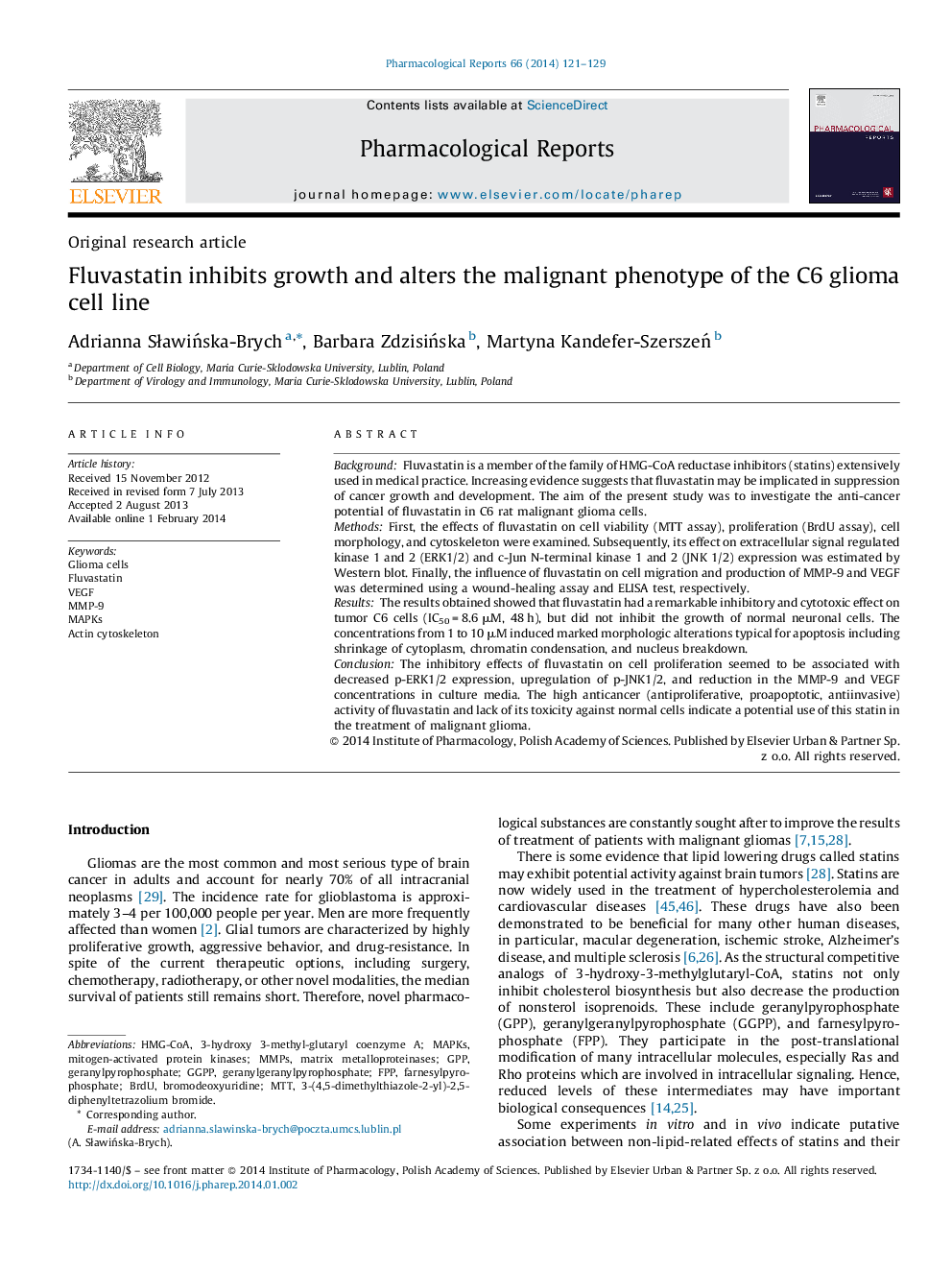| Article ID | Journal | Published Year | Pages | File Type |
|---|---|---|---|---|
| 2010629 | Pharmacological Reports | 2014 | 9 Pages |
BackgroundFluvastatin is a member of the family of HMG-CoA reductase inhibitors (statins) extensively used in medical practice. Increasing evidence suggests that fluvastatin may be implicated in suppression of cancer growth and development. The aim of the present study was to investigate the anti-cancer potential of fluvastatin in C6 rat malignant glioma cells.MethodsFirst, the effects of fluvastatin on cell viability (MTT assay), proliferation (BrdU assay), cell morphology, and cytoskeleton were examined. Subsequently, its effect on extracellular signal regulated kinase 1 and 2 (ERK1/2) and c-Jun N-terminal kinase 1 and 2 (JNK 1/2) expression was estimated by Western blot. Finally, the influence of fluvastatin on cell migration and production of MMP-9 and VEGF was determined using a wound-healing assay and ELISA test, respectively.ResultsThe results obtained showed that fluvastatin had a remarkable inhibitory and cytotoxic effect on tumor C6 cells (IC50 = 8.6 μM, 48 h), but did not inhibit the growth of normal neuronal cells. The concentrations from 1 to 10 μM induced marked morphologic alterations typical for apoptosis including shrinkage of cytoplasm, chromatin condensation, and nucleus breakdown.ConclusionThe inhibitory effects of fluvastatin on cell proliferation seemed to be associated with decreased p-ERK1/2 expression, upregulation of p-JNK1/2, and reduction in the MMP-9 and VEGF concentrations in culture media. The high anticancer (antiproliferative, proapoptotic, antiinvasive) activity of fluvastatin and lack of its toxicity against normal cells indicate a potential use of this statin in the treatment of malignant glioma.
